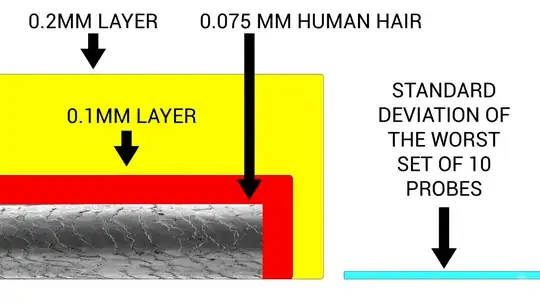This answer goes into the reliability aspects of the often-discussed "Touch sensors" within the 3D printing community based on experience with the BLTouch and the 3D Touch..
Throughout my journey in 3D printing, I've had the opportunity to experiment with various iterations of clones (from metal pins to plastic pins), referred to as the "3D Touch", attempting to emulate the renowned BLTouch sensor. One undeniable allure of these clones is their significantly lower price point, which tricked me into buying them being a budget-conscious 3D print enthusiast. However, it's essential to describe my experiences with these clones, which spanned up until 2019.
At first glance, these clones seemed promising, operating as expected and demonstrating competence in their initial usage. However, this initial phase was short-lived, as many of them eventually caved in to issues that severely impacted their reliability. These problems typically manifested in one of two ways: they either ceased to function altogether or exhibited erratic behavior by unpredictably deploying and retracting the probing pin during critical operations such as G28 and G29 G-code executions. The latter issue, characterized by premature pin deployment when the print bed was not adequately lowered (CoreXY), often resulted in disrupted Auto Bed Leveling (ABL, What is ABL or UBL? Is this the same?) sessions, leading to subpar print outcomes (actually no print at all...) and frustration.
In contrast, after making the switch to a genuine BLTouch sensor, the transformation in reliability was remarkable. It has faithfully served its purpose on my CoreXY printer for a continuous span of approximately five years, without a hint of trouble. The consistent and error-free performance of the authentic BLTouch has not only elevated the quality of my 3D prints but has also instilled confidence in the reliability of my 3D printing endeavors.
In essence, while cost-effective alternatives may initially appear enticing, investing in a genuine BLTouch sensor can undoubtedly pay itself in terms of frustration, reliability and long-term satisfaction. In hindsight, buying a genuine BLTouch would have actually saved me; "Penny wise, pound foolish" comes directly to mind.
